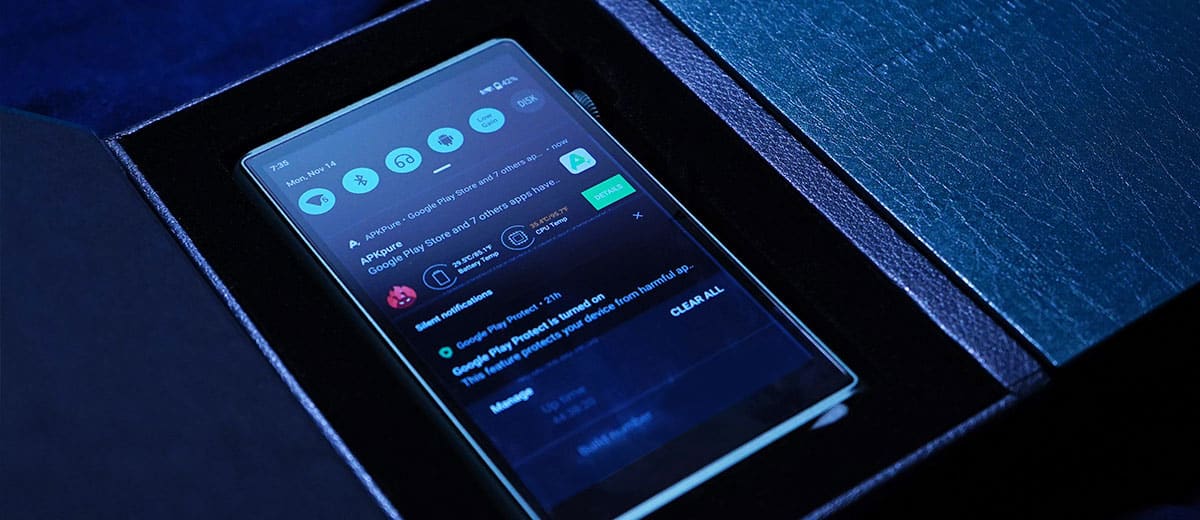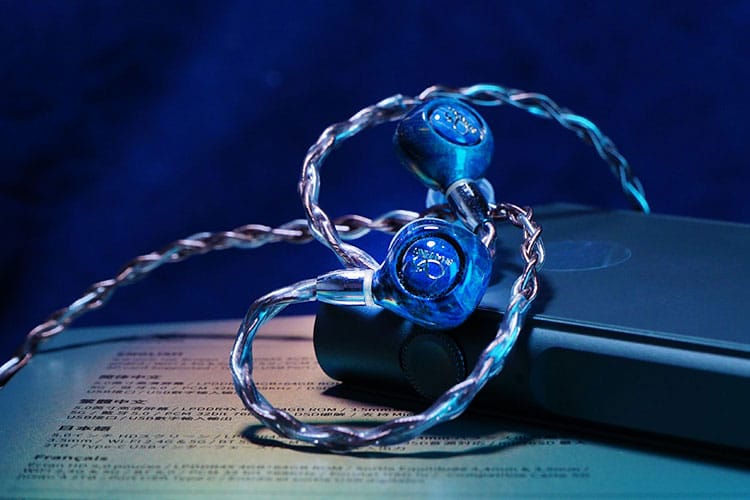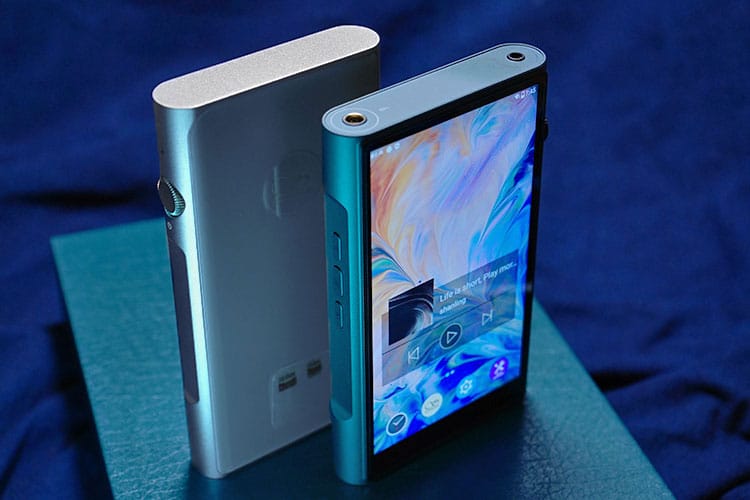Synergy
Power
With the 3.5mm terminated Westone MACH 50, the M6 Ultra can power it to sound full-bodied in the treble and clean in the vocal delivery.
However, the transient tones are much smoother compared to the balanced output, and separation isn’t as good. The less power also seems to press down the dynamics and it sounds more flattened in the output.
The 4.4mm connection is more capable of handling higher loads and can drive the MACH 80, Final A8000, or even small cans to sound more dynamic and punchier in the bass with high gain.
There is enough raw power and resolution to feed various mid to higher-end IEMs I own without the need for an amplifier even for higher impedance models like the Earsonics STARK.
Pairings
The engaging mid-bass on the M6 Ultra makes it a great pair with dynamic IEMs or hybrids. The low output impedance allows it to easily pair with sensitive multi-BAs very well too to not sound dampened or curtained.
IEMs with sharper treble transients and fast attacks, for example, the Etymotic EVO, sounds smoothly articulated and very transparent with voices while having good control. Other sharper-sounding IEMs such as the A8000 also sound fairly controlled, very dense, and punchy in the bass.
Testing with the Shanling MG600 with high gain on, the bass punches with good air and the vocal sounds energetic and dynamic with little sibilance in the upper register.
The overall detail retrieval power is satisfactory and the articulation in the lows and mids is very smooth. The M6 Ultra can also drive the ME800 pretty well to sound smooth and engaging in the mids, with a moderately staging size and clear instrument positioning.
In general, the M6 Ultra can bring out the character of dynamic drivers with its power and coloring, also lifting clarity slightly with its upper mids elevation.
It works well with different IEMs to sound smoother and more powerful in the lows but without sounding veiled or bloated, though there is less synergy with boomy tunings or IEMs with very recessed mids.
Select Comparisons
Shanling M6 Pro 21
$799
Technical
The Shanling M6 Pro 21 features dual ES9068AS DAC, Snapdragon 430 CPU, and 760mW of output power. It has been one of the best-value players with great performance and design, also Shanling’s signature timbre.
Looking at the specs we can see some similarities in the amping circuitry where both designs use the OPA2211 as a low pass filter and BUF634A as a buffer.
The new M6 Ultra Shanling has fixed the major drawback – the system speed by using the much faster Snapdragon 665. That gives the whole experience a lift by allowing the M6 Ultra to work much more smoothly with various streaming apps or minigames.
Additionally, the battery size also goes up from 4000mAh on the M6 Pro 21 to 5650mAh on the M6 Ultra, making it slightly thicker at the same time.
Design
While both models are called M6 their design is significantly differentiated, whereas the M6 Ultra looks like a smaller-sized M8.
The new design takes away the beautifully curved edges on the glass panel and is thicker as mentioned. However, it looks more premium with glass inserts on both the top and bottom of the player and a more stylish matte green paint job.
One other major difference is the placement of the output jacks whereas on the M6 Ultra the outputs are on top of the player. On the M6 Pro 21, it is on the bottom side; both come in handy for me but personally, I prefer the layout on the M6 Ultra more.
Performance
The M6 Pro 21 sounds very different side by side as it is more colored due to its sharper roll-off and more confined staging. The overtones aren’t as elaborated on the M6 Pro 21 and the result is more warmth and forwardness in the vocal that sounds more sweetened and rounded.
The M6 Ultra feels more layered and powerful in the mid-bass being able to punch deeper, at the same time it is more textured and intense in the treble which helps illustrate a more open stage and enhances separation power.
It feels like a refined version of the M6 Pro 21 and the original M6, which has the same vocal tuning direction but steps up the transient performance and overall detail retrieval power.
The overall tuning is more natural and dynamic on the M6 Ultra and if you factor in the system speed, the experience on the M6 Ultra is quite a bit more enjoyable.
Shanling M7
$1249
Technical
The Shanling M7 is a very capable player that uses one 8-channel ES9038Pro DAC and the same Qualcomm 665 SoC solution as seen on the M6 Ultra but with 6GB ram.
Other features include Shanling’s CPAF phase correcting technology, and an OP+BUF amping stage with Muses8920 in the I/V stage. The M7 can output 400mW on SE output and 900mw on the balanced output which is 25% higher compared to the max output.
Even when the battery is 1350mAh bigger on the M7 its actual playback time is slightly shorter than on the M6 Ultra which does not have as much power in the output.
With the same controller, the M7 and M6 Ultra feel equally fast when navigating through different apps. However, when there are more background apps or scrolling through a long album cover list fast, the M7 loads the thumbnails quite a bit faster.
Design
The M7 Follows M9’s streamlined design with a curvy outline on the sides of the aluminum body, which looks very sexy and would take more effort to machine from a block of aluminum. The screens on both units are using an identical SHARP Full HD panel which offers the same experience.
The M6 Ultra’s design is comparably more modest yet the color theme makes it look cool, and it feels slimmer with the slightly smaller dimensions.
It may not be the first thing to consider when it comes to colors on a DAP but when it is done right it helps the product to be much more appealing, the M6 Ultra has got this spot on.
Performance
The M7 is noticeably more powerful on the SE output with transient tones being firmer and the overall resolution one step up from the M6 Ultra, a typical “Hi-Fi” tuning approach that sounds more neutral.
If you have a collection of 3.5mm terminated earphones the M7 has nearly double the power in its 3.5mm output which makes it a more ideal pairing. However, when it comes to balanced output the M6 Ultra comes close in terms of raw power delivery.
Testing with Classical music, the M7 sounds very refined and airy in the treble, instruments are well outlined and it has a stronger sense of accuracy. It works well with pieces that bow powerfully or with stronger, faster attacks. The M6 Ultra does not present the edges of the instruments as clearly and their relative position isn’t as defined as on the M7.
On the M6 Ultra, instruments particularly ones that cross the mid-range sound softer and have a slower decay in the bass. As such some slower, affectionate works for example Horowitz playing Träumerei, sound more elaborate and melodic than on the M7.
When it comes to synth pops and other hits in the 80s and 90s, the M7 sounds more loyal to the recording. It stresses the bass texture and transient tones so you can hear the bass go deeper and the upper register being airier and more definitive.
The M6 Ultra isn’t as extended, some air is rolled off but in exchange, there is much more sweetness and a vintage, sweet coloring.
Our Verdict
Shanling has taken a top-down approach in refreshing their M-series DAPS, making it more appealing than ever before with features inherited from the bigger brothers.
The Shanling M6 Ultra has put together a well-characterized, engaging tuning reminiscent of the original M6 and the M6 PRO 21.
However, with enhanced technicalities, excellent system speed, and a sporty color scheme, Unquestionably this is one of the most solid performers within the $1000 price bracket.
Shanling M6 Ultra Technical Specifications
- Dimensions: 127 x 77 x 18 mm
- Weight: 263g
- Screen size: 5-inch Full HD
- Operating System: Open Android 10
- CPU: Qualcomm Snapdragon 665
- Memory: 4GB RAM, 64GBROM
- Hi-Res support: 32/768 & DSD512
- MQA: Support 16X unfold
- Bluetooth: Bluetooth5.0, supports LDAC, aptX HD, aptX, SBC
- Bluetooth Receiver Codec Support: LDAC, SBC
- Wi-Fi: 2.4G/5G, supporting DLNA, Airplay
- DAC: 4x AKM AK4493SEQ
- Amping circuitry: OPA1612 + OPA2211 + LTA8092 + BUF634A
- Output Power(balanced): 720mW@32Ohm
- Output Power(single-ended): 240 mW@32Ohm
- Output impedance: <1ohm
- Battery: 5650 mAh, supporting 18W QC3.0 quick charge
- Battery life: 13.5 hours (single-ended), 9 hours (balanced)





